Exploring the Bizarre Aquatic Life of the Amazon River
Written on
Introduction to the Amazon's Mysteries
The Amazon River basin stands as one of the most biologically diverse regions on the planet, captivating and frightening humanity for centuries. Myths and legends have been inspired by the strange beings lurking in its depths. In this exploration, we will uncover the terrifying aspects of these creatures and determine if any truly pose a threat to humans.
Chapter 1: The Amazon's Unique Residents
#8 Arapaima (Arapaima gigas)
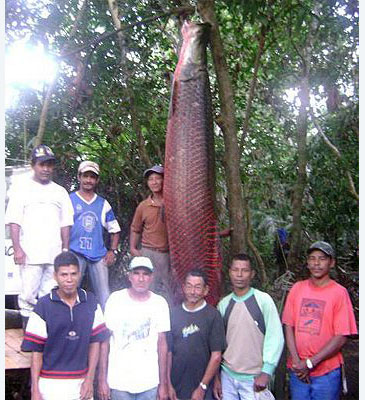
Description The Arapaima, scientifically known as Arapaima gigas, is a massive freshwater fish that glides through the Amazon's waters. It can reach lengths of nearly 10 feet and weigh up to 440 pounds, although most individuals average between 7 to 8 feet.
Cool Fact A fascinating feature of the Arapaima is its ability to breathe air, allowing it to survive for up to 24 hours outside of water. During the dry season, these fish often become trapped in small ponds where oxygen levels drop, enabling them to dominate the food chain.
Diet Primarily piscivorous, Arapaimas mainly feast on fish but occasionally consume fruits and other items that drift into their habitat.
#7 Piraiba (Platystoma vaillantii)
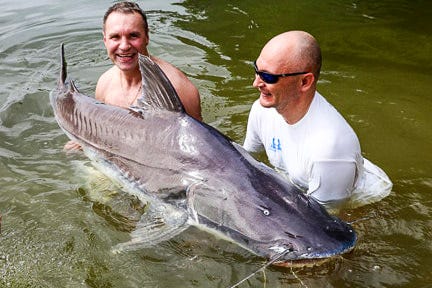
Description The Piraiba, or Platystoma vaillantii, is another giant catfish that mirrors the Arapaima in size, reaching lengths of up to 10 feet and weights of around 440 pounds. These fish prefer the deeper sections of the river and migrate thousands of miles to spawn.
Maneater Reputation On rare occasions, the Piraiba has gained a fearsome reputation for attacking humans. Accounts exist of fishermen who have encountered this formidable predator, with one incident resulting in a tragic loss.
Diet The Piraiba utilizes its keen electro-sensory organs to locate prey, consuming a variety of creatures, from smaller fish to larger animals, and occasionally humans.
#6 Large-Tooth Sawfish
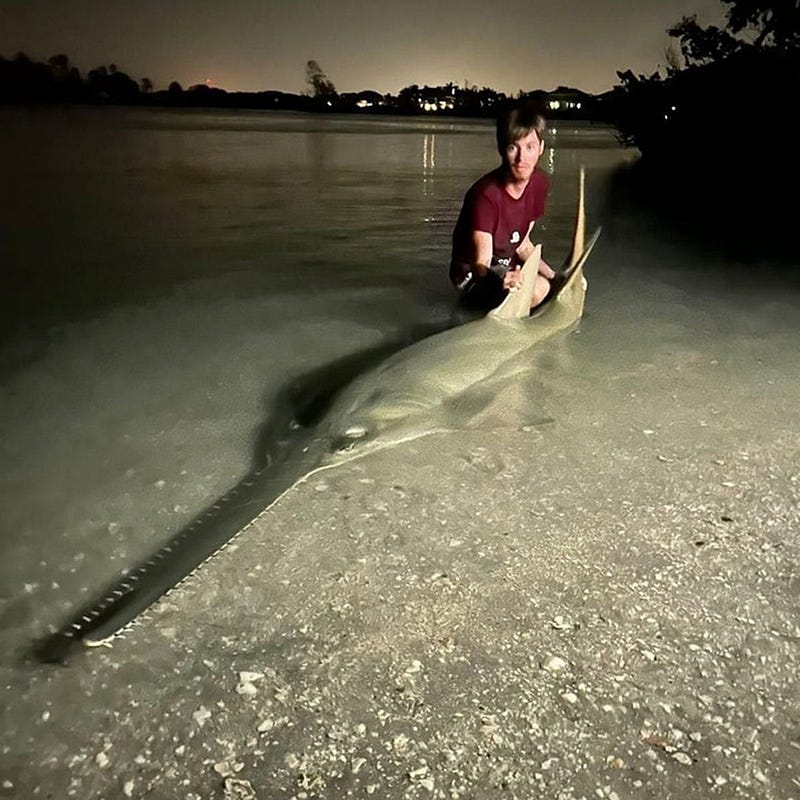
Description The Large-Tooth Sawfish (Pristis microdon) can grow up to 25 feet long and weigh as much as 1,100 pounds. With its characteristic saw-like snout, it resembles a shark but belongs to the ray family.
Conservation Status This species is critically endangered, primarily due to overfishing and habitat loss. Young sawfish are often found in brackish waters, including parts of the Amazon.
Diet Sawfish diets evolve with age; juveniles focus on crustaceans, while adults primarily hunt fish using their unique rostrum as a weapon.
#5 Matamata Turtle
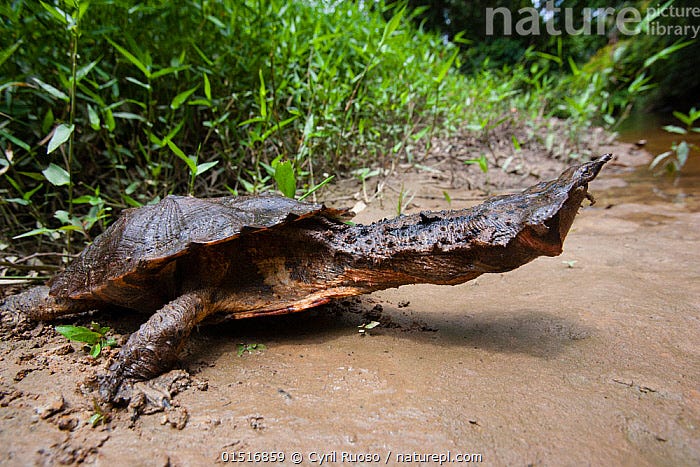
Description The Matamata Turtle (Chelus fimbriatus) is a unique aquatic species known for its bizarre appearance. Its rough, textured shell allows it to blend seamlessly into its surroundings, making it an effective ambush predator.
Hunting Technique By remaining still on the riverbed, the Matamata waits patiently for unsuspecting fish to come within reach.
Diet This turtle primarily feeds on fish, utilizing its camouflage to surprise and capture prey.
#4 Electric Eel

Description Despite its name, the Electric Eel is not a true eel but rather a type of knifefish. Thriving in murky waters, it uses electric discharges to locate prey and navigate its environment.
Impressive Ability Electric eels can generate shocks of up to 600 volts, a feature used for both hunting and self-defense.
Diet These eels adapt their diets as they grow, starting with crustaceans and moving on to a broader range of prey, including fish and amphibians.
#3 Giant Leech
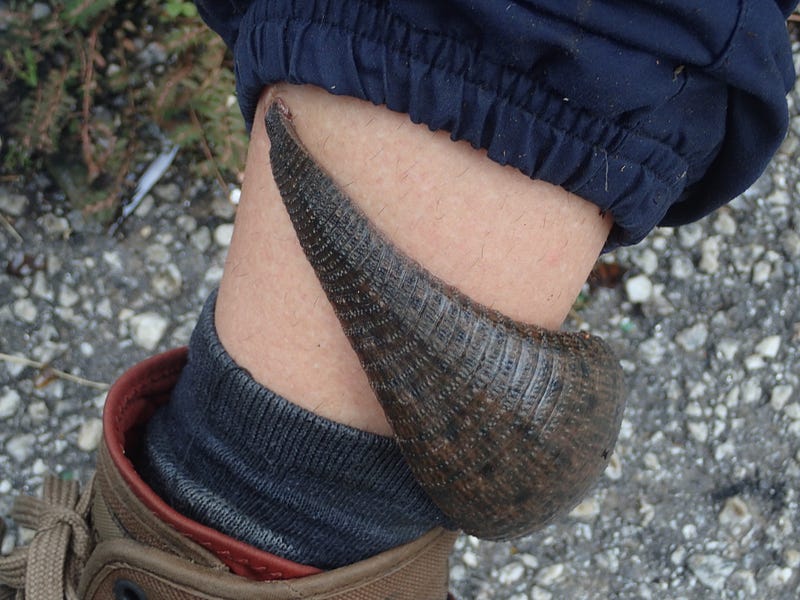
Description The Giant Leech can grow up to 18 inches long and is notable for having a separate brain in each of its 34 segments, allowing for remarkable movement and adaptability.
Defense Mechanism When threatened, these leeches secrete mucus to deter predators, making them less appealing targets.
Diet Giant leeches are opportunistic feeders, preying on smaller amphibians and, as they mature, larger animals like caimans and even cattle.
#2 Payara (Hydrolycus scomberoides)

Description The Payara, or Hydrolycus scomberoides, is a striking fish recognized for its long body and distinctive fangs, giving it the nickname "vampire fish."
Hunting Style This predator uses its speed and sharp fangs to capture fish, holding them in its mouth before swallowing them whole.
#1 Candiru

Description Candirus are tiny fish known for their parasitic nature, often attaching to larger fish's gills and feeding on their blood.
Myth and Reality While rumors suggest they target humans, particularly through urinary tracts, there is no concrete evidence to support this claim.
Diet These fish primarily consume the blood of their host fish, equipped with features that allow them to latch onto gills effectively.
Conclusion
Exploring the extraordinary diversity of species in the Amazon River highlights the critical need for conservation efforts. As we learn more about these unique creatures, we also grow to appreciate the delicate balance of their ecosystem and the importance of protecting it for future generations.
This video showcases some of the astonishing and unusual creatures recently discovered in the Amazon River.
Join us on a search for the remarkable and unique wildlife of the Amazon Rainforest.